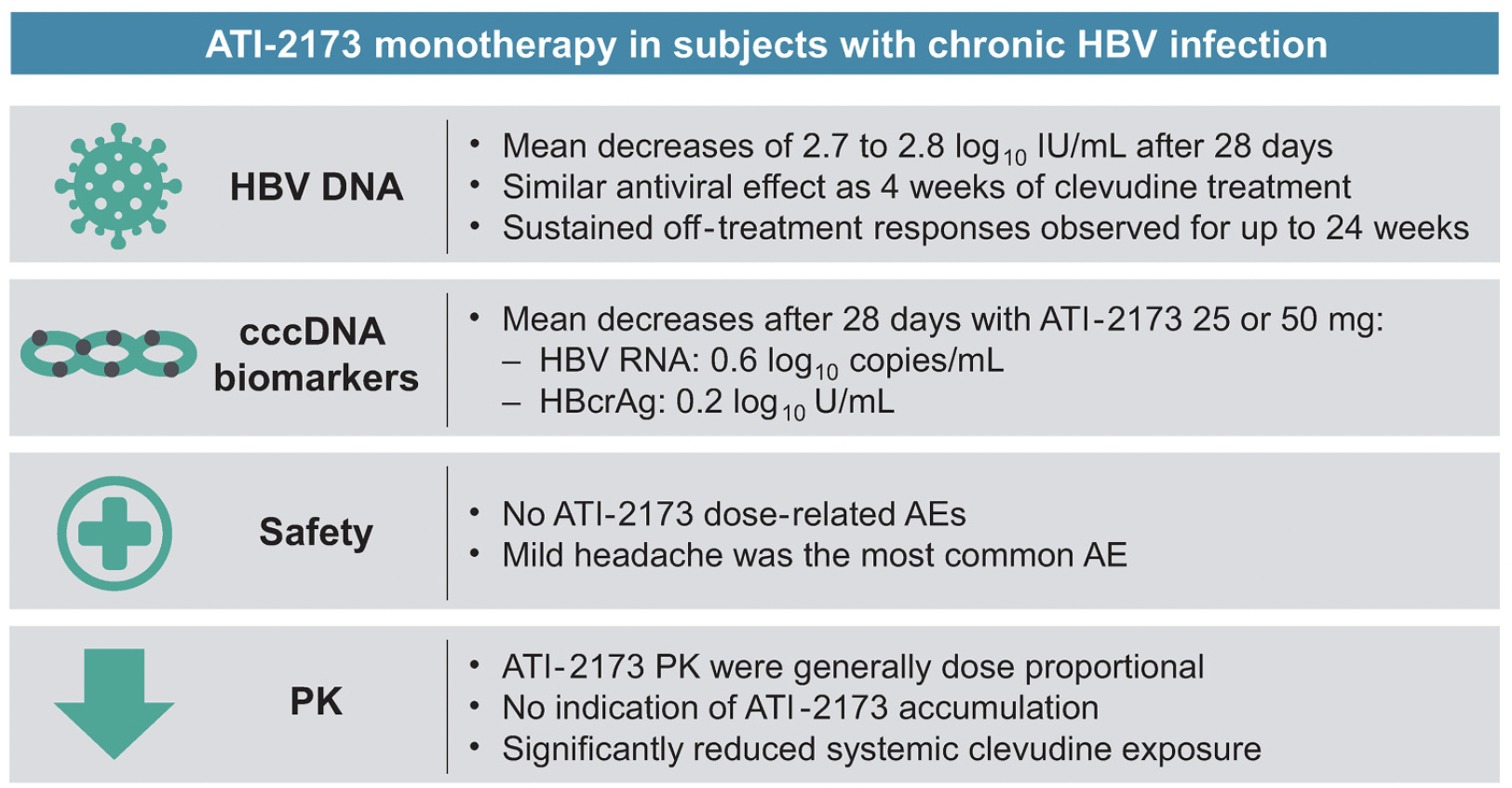ASPINs: Potential agents for chronic HBV cure regimens

Active site polymerase inhibitor nucleotides (ASPINs): Potential agents for chronic HBV cure regimens
Chronic hepatitis B virus (HBV) infection affects 240 to 300 million people worldwide. In the nucleus of infected hepatocytes, the HBV genome is converted to covalently closed circular DNA (cccDNA), which persists and serves as a transcriptional template for viral progeny. Therefore, a long-term cure for chronic HBV infection will require elimination of cccDNA. Although currently available nucleos(t)ide analogues (eg, tenofovir disoproxil fumarate, tenofovir alafenamide, entecavir) effectively control HBV replication, they are seldom curative (functional cure rate ∼10%) and require lifelong treatment for most patients. As such, antiviral agents with novel mechanisms of action are needed. Active site polymerase inhibitor nucleotides (ASPINs) noncompetitively distort the HBV polymerase active site to completely inhibit all polymerase functions, unlike traditional chain-terminating nucleos(t)ide analogues, which only target select polymerase functions and are consumed in the process. Clevudine, a first-generation ASPIN, demonstrated potent and prolonged HBV suppression in phase 2 and 3 clinical studies, but long-term treatment was associated with reversible myopathy in a small number of patients. ATI-2173, a novel next-generation ASPIN, is structurally similar to clevudine but targets the liver and demonstrates potent anti-HBV activity on and off treatment, and may ultimately demonstrate an improved pharmacokinetic and safety profile by significantly reducing systemic clevudine exposure. Thus, ATI-2173 is currently in clinical development as an agent for HBV cure. Here, we review the mechanism of action and preclinical and clinical profiles of clevudine and ATI-2173 to support the role of ASPINs as part of curative regimens for chronic HBV infection.
